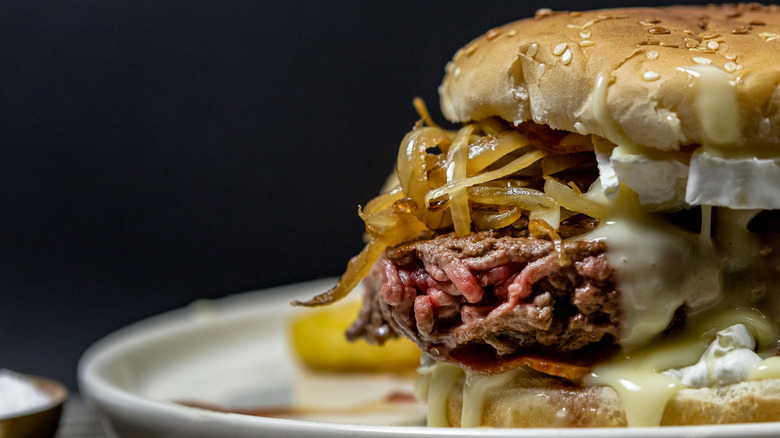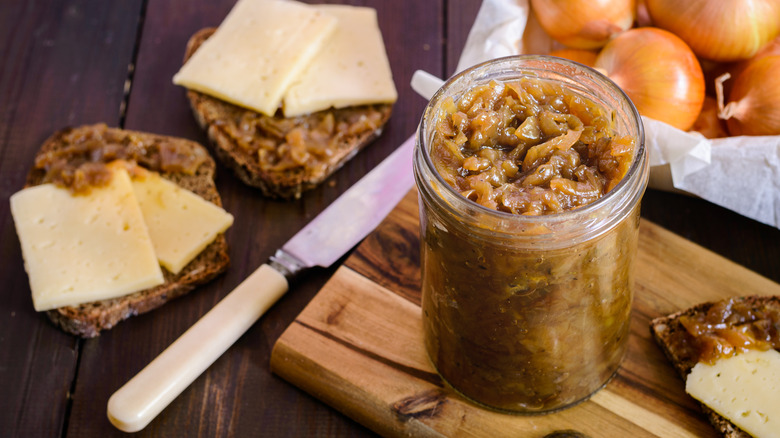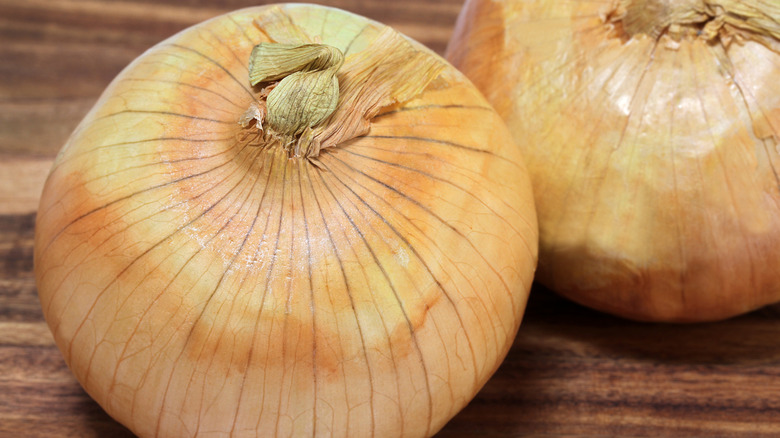When Should You Be Using Sweet Onions?
When it comes to cooking, there are few things more versatile than the onion. Raw or cooked, sliced or diced, deep-fried or caramelized. The onion is the aromatic base to your favorite sauce, the zingy crunch in your salad, the perfect finisher to top off that piece of steak.
On your weekly trips to the grocery store you'll see those familiar colors and sizes piled high — red onions, yellow onions, white onions, sweet onions. We may think an onion is an onion and that they're all fairly interchangeable, but this isn't necessarily true; each type is distinct and should be used in distinct ways to bring out its potential.
Many of us like to reach for the sweet onions, because we prefer their less-pungent, more-mild onion flavor (and also, they don't make us cry). But do we actually know how best to use these versatile veggies, in the ways that highlight their unique qualities? Let's talk about how and when to cook with sweet onions so you can use them to their full potential.
How to let those sweet onions shine
Sweet onions are large, bulbous, and usually a light yellow color with thin skin. What makes them sweet? They actually have less sulfur than other onions, the lack of which helps to unmask their natural sugars and bring out that sweeter flavor. These onions simply don't have the pungent kick that most onions have, so they don't go very far in terms of aromatics — but there are other ways to use them that allow their distinct sweetness to shine.
If you want to use them raw, sweet onions will work best in things like salads, relishes, and garnishes. Because of their mild in taste, they're a great compliment to many salads; use thinly sliced or shaved sweet onions in a tomato and basil salad, to top off some simple leafy greens, or even as the main ingredient in the salad dressing itself. Sweet onions are also the perfect choice for relishes because their sweetness balances out the more acidic elements, and they work wonderfully as a subtle garnish on anything from sandwiches to sausages.
As for cooking sweet onions, because of their sugar content they're excellent for frying, caramelizing, or simply grilling or roasting on their own. Sweet onions are the onion of choice for the fried food favorite: onion rings. You can use caramelized sweet onions as a topping on meat, burgers, or pizza, or to make things like onion jam, dips, crostinis, and tarts. And you can always roast or grill them up in a vegetable medley or on their own for a slighty charred, slightly sweet addition to any meal.
When's the best time of year to use sweet onions?
There's not just the question of when to use sweet onions in the kitchen, but also when to use them throughout the year. Even something like onions, which always seem to be available and are used constantly throughout the year, have specific growing and harvesting seasons when they'll be at their freshest and taste their best.
For sweet onions, you'll want to largely stick to spring and summer to take advantage of them while they're in season, especially if you're using them raw. But the specific harvest season is dependent on the type of sweet onion as well as weather and soil conditions.
You might recognize varieties like Vidalia, Maui, Walla Walla, or Texas Sweets — these are all kinds of sweet onions. Texas Sweets are in season earliest in the year, starting in March and going through June. Vidalia onions are usually available from April to early September, and Maui onions for an even longer season from May to December. Finally, Walla Walla Sweets are in season for just a few months from June to August.


